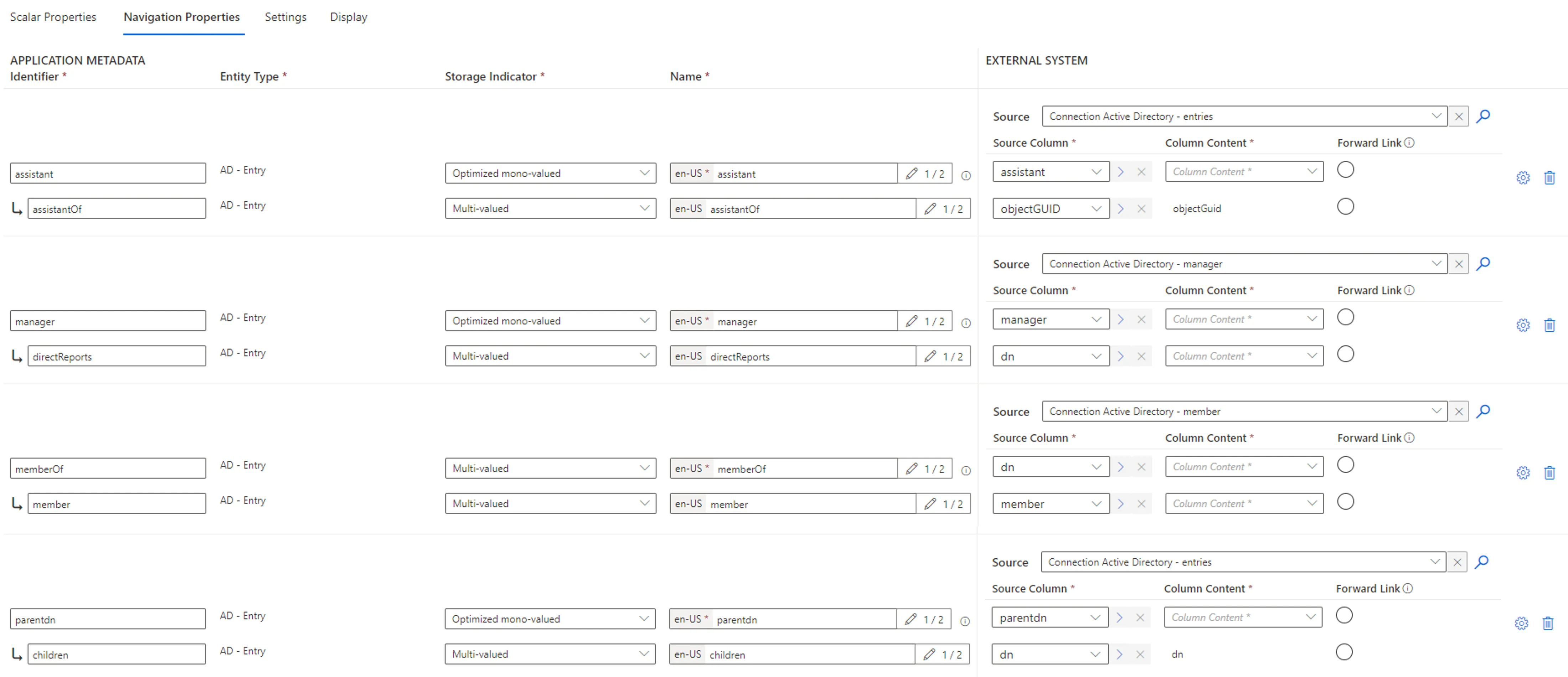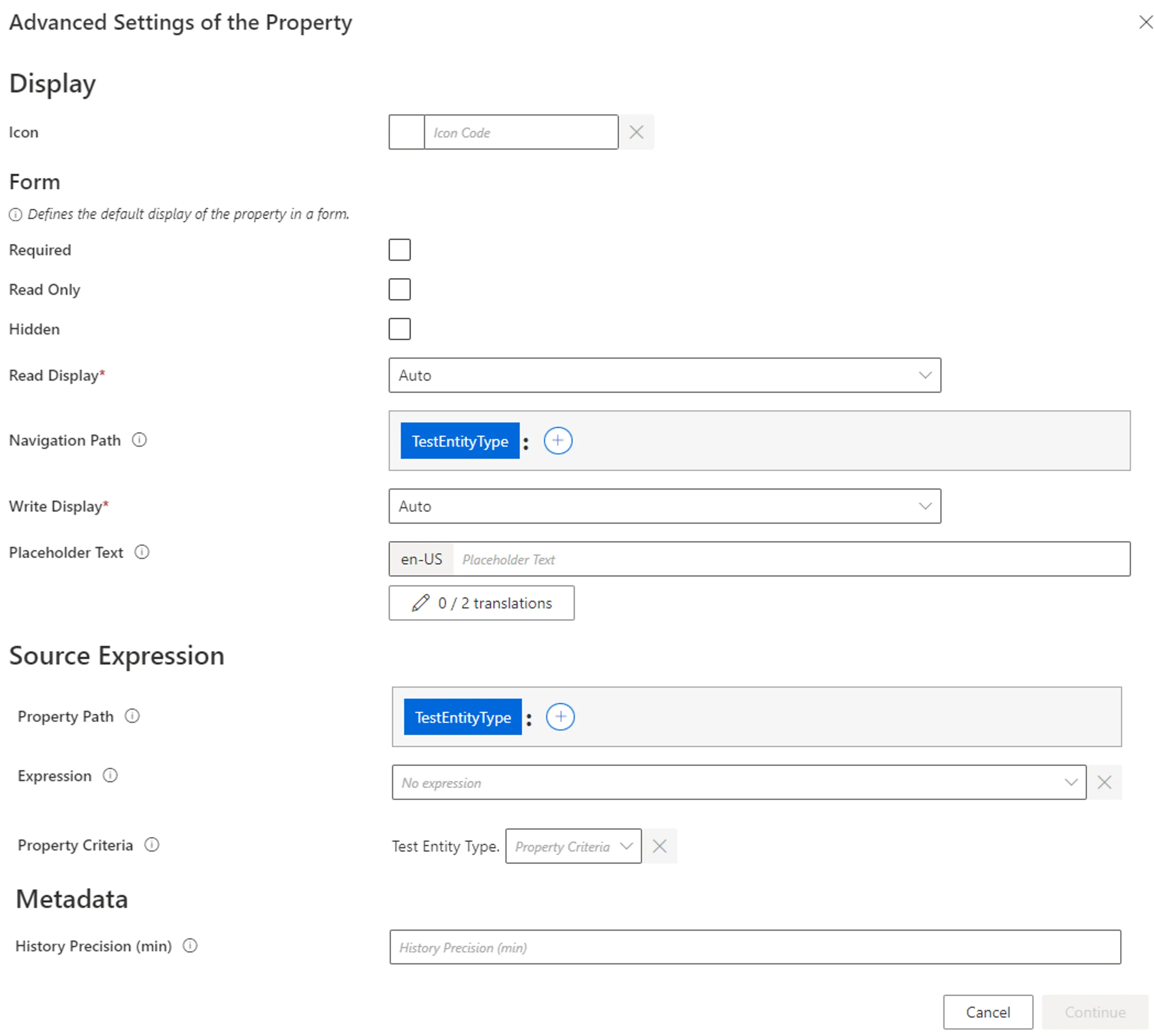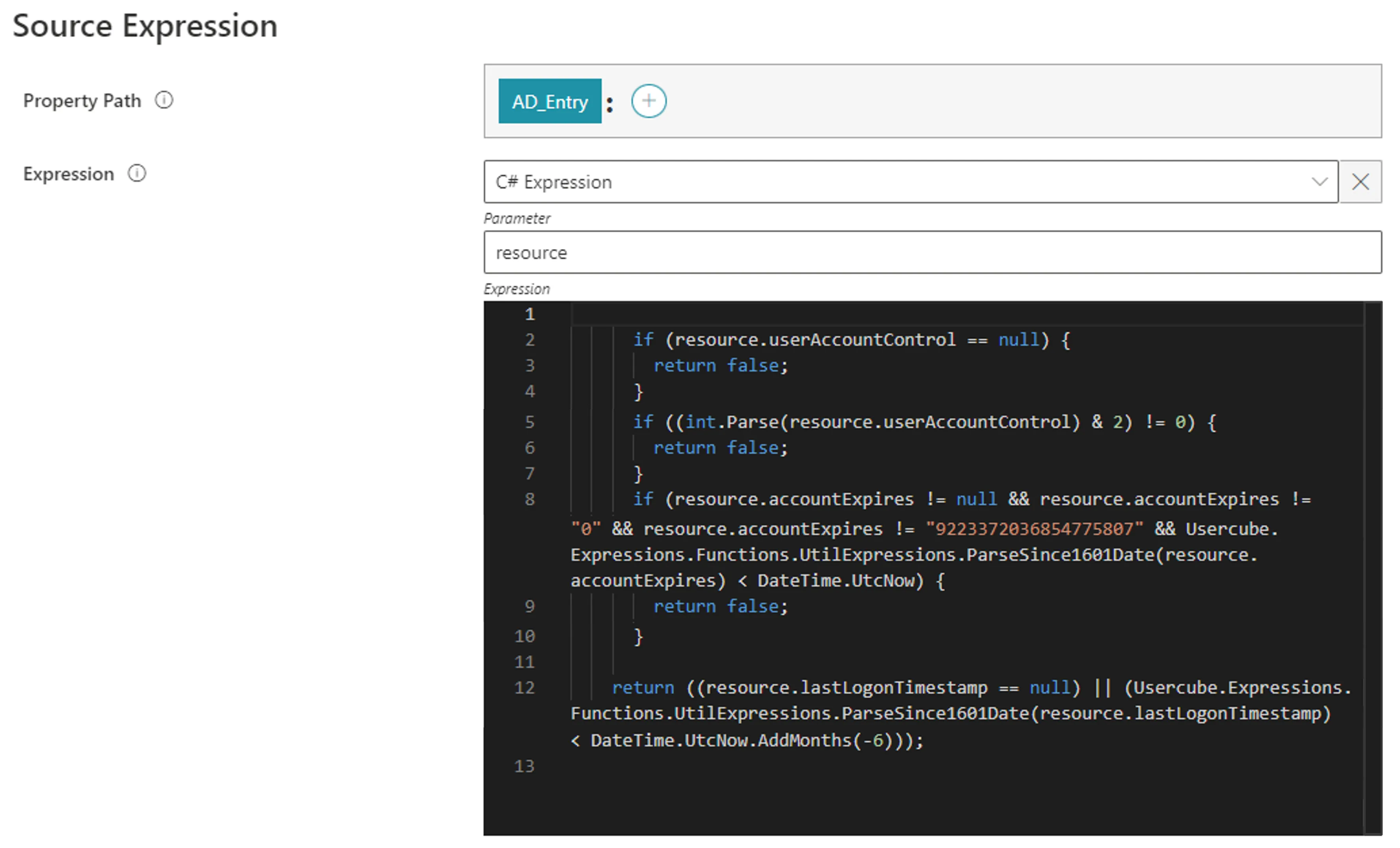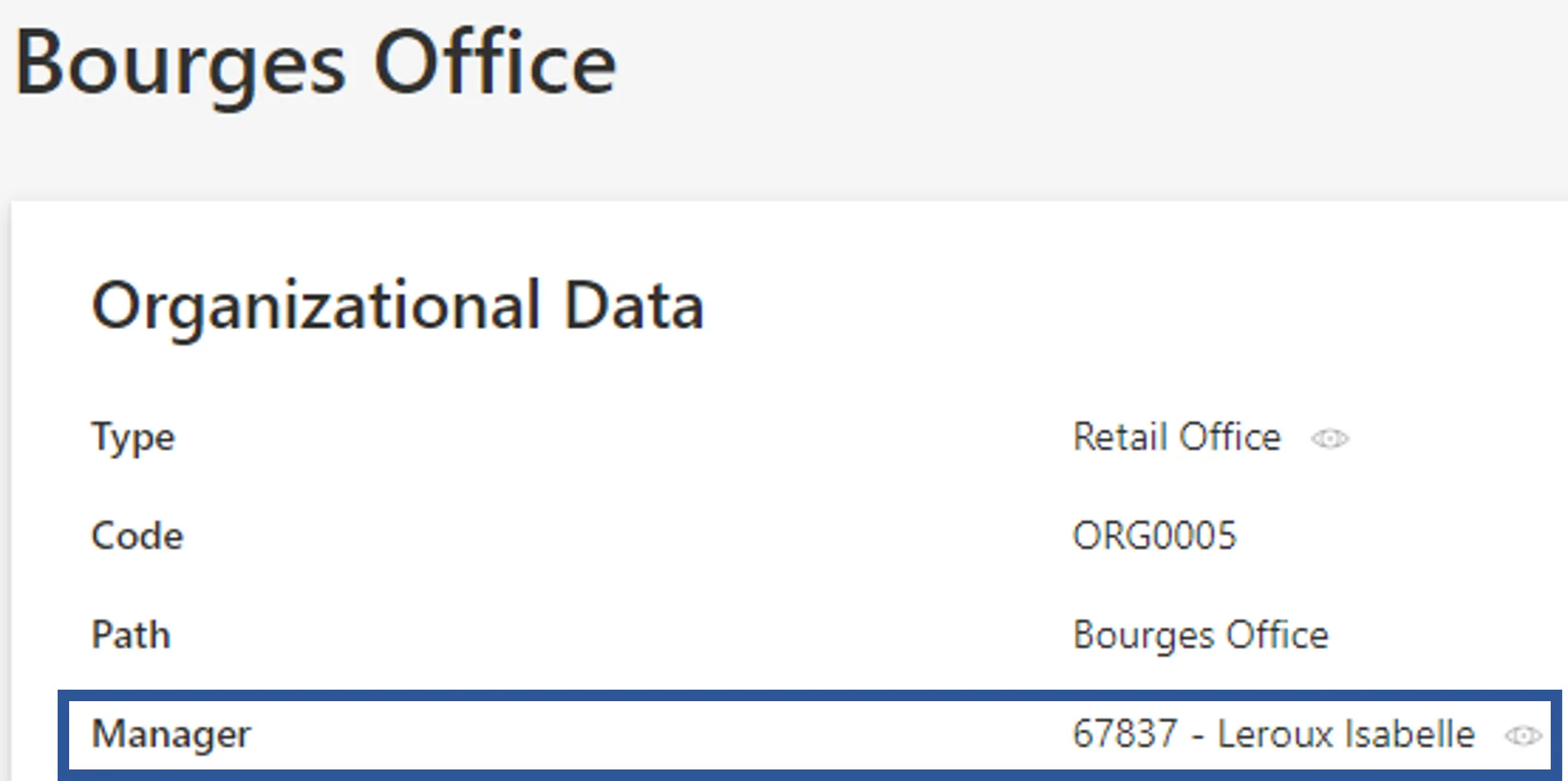Define Navigation Properties
How to define the properties which describe the Entity Type's relationships to other entity types.
Overview
Here you will learn to define navigation properties, which contain scalar values just like scalar properties, but which are also linked to and point to other properties—from the same entity type or to another entity type. See the Define Scalar Properties topic for additional information.
For example,
memberOfcan contain a list of groups, thus linking a user to groups, and a group to other groups. In the UI,memberOfis displayed just like scalar properties, but you can click its values to access each group in the list. Here for the AD entryADM Vidal Pierre:
Clicking on one of these groups will display the group’s properties, including the other side of the
memberOfproperty—calledmember—which contains the list of users and groups who are members. Example:SG_APP_RAY_0_LDAP_READLDSFEDE:
As another example, a department is linked to a manager who is an existing user. The user identifier is used in the
Managerproperty to create the link between department and manager. In the UI,Manageris displayed like scalar properties, but you can click it to access the manager’s page:
Clicking the manager displays their properties, including the
Departmentproperty, which points back to the managed department:
Navigation properties can create a link:
- inside an entity type;
- between two entity types from the same connector;
- between two entity types from different connectors.
Inside Identity Manager, a navigation property has a flip side—one for each linked element.
For example, in AD:
member: for groups (contains a list of users)memberOf: for users (contains a list of groups)
Some systems only expose one side.
For example, AD only exposes member on groups. Users don’t have memberOf.
But Identity Manager links both sides, translating the info to simulate bidirectionality.
When importing from AD, member updates Identity Manager's member, which then updates memberOf.
Most properties in Identity Manager are linked to those in the managed system so data can be imported and stored correctly. These mappings are configured in Step 3 below.
If a property doesn’t exist in the source system, you can still create it using + Add a navigation property. This is useful for storing internal-use data that the connected system can’t read or write.
---
Define the Entity Type's Navigation Properties
Define navigation properties by following these steps:
-
Start by declaring an Entity Type.
-
In the entity type's Properties section, click on the Navigation Properties tab.
-
Click Map a navigation property to display existing columns from the external source, then select the ones to use.
-
Fill in the information fields:

If you map a column from the source, the first line is for the source column, and the second is the new navigation property in Identity Manager (always in the entity type).
Application Metadata Fields
-
Identifier: Unique, no whitespace, must be C#-compatible. See Microsoft lexical structure -
Entity Type: Always refers to the entity type of the second property. -
Storage Indicator: Describes the association:- Mono-valued (1:1 or many:1)
- Multi-valued (1:many or many:many)
Identity Manager can store up to 25 optimized mono-valued nav properties. Prioritize:
- Properties used in forms/search bars
- Properties used in expressions/role models
- Others
-
Name: Displayed in the UI.Conventions:
- Mono-valued → singular
- Multi-valued → plural
- Names/IDs cannot be "Id"
External System Fields
-
Source: Source connection for the data.- Auto-select from the mapped source
- Choose from other entity types in the same connector
- Use the search icon to select across connectors
-
Source Column: Column where data comes from -
Column Content: Which attribute (e.g.dn,id) to use for matching resources
Example: If the source column
managercontains userdns, selectdnas source content.
Common AD navigation properties:
Entries,assistant,assistantOf,manager,directReports,memberOf,member,parentdn,children
> 
-
Click the gear icon to access advanced settings:

-
Icon: Choose from Microsoft icon set -
Source Expression: Define using a property path or expression
Example: Scalar
isUnusedcreated by combiningaccountExpiresandlastLogonTimestamp
-
Flexible Comparison Expression: Adds advanced search matching -
History Precision: Set how often property history is recordedExample:
lastLogonTimestampchanges often. Without limiting historization, the database fills quickly. SetHistory Precisionto 1 week (10080 min) to only record weekly changes.
-
Clicking Continue closes the window but does not save the configuration.
---
Reload
After saving, a green banner reminds you to reload the schema. It’s not necessary after every step—but is required after the final step to apply changes.
The Reload button ensures updates appear in the menu links on the UI home page. You’ll find it either in the banner or on the connector dashboard.
---
Next Steps
Once the entity type is defined—with scalar properties, keys, and navigation properties—you can Set Resources' Display Names.



